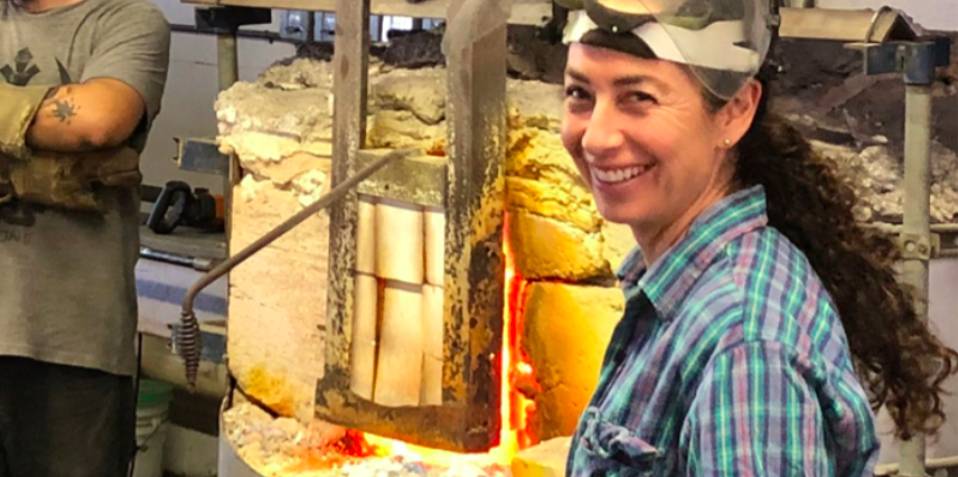Into the Heat… The Story So Far…
The plaster horse mold has been pressed in the sand and readied for the most spectacular part of the day – pouring the 2,000 degrees liquid molten glass into the mold.
We change into our protective clothing. This is usually heavy boots and thick shirts and jackets. Gloves are the most important part our equipment, heavy Kevlar gloves lined with wool, and covered with Kevlar mitts. Mask, goggles, sunglasses depending on the task in the casting team.
You may have noticed a theme here of ‘heavy, thick, warm” … Add this to the heat of the glass crucible (2,000 degrees!) … and outside the Studio, our Florida summer seems quite pleasant by comparison!
“This Most Dangerous Dance…”
Glass casting has been called “the most dangerous dance of heat and light”.
Watch as Thomas works with Marlene in the studio to pour glass into the mold for
another piece, the Sitting Buddha.
Glass casting is like a team sport. Each player must know their part perfectly, and the part of every other player too. When dealing with this degree of heat and hazard there is no space for confusion or even discussion. You do your job right and move on.
Each move is drilled and duplicated, over and over, until it becomes part of muscle memory and can be done without thinking. Thomas, my lead ladle-man, says he’s good at not thinking!
Pouring the Glass
This is how it goes.
Mike opens the crucible door. Thomas ignores the wall of heat and slides the ladle swiftly through the opening. With a deft dip, twist and scoop he pulls out the full and heavy ladle of molten glass in one swift motion.
He rests it on the yoke in front of me, so I can snip off the inevitable spill hanging over the lip of the ladle with my heavy iron shears.
Now again, Thomas must lift and shift and ease the heavy ladle and its freight of liquid molten glass, glowing lava-hot, across and over to the Horse-void in the sand, and slowly tilt the ladle to start the stream of glass exactly where it needs to go, keep tilting the ladle evenly and incrementally to keep the stream steady and finally rotate the ladle back to pull out the last thin thread of glass which I reach over and snip off with my iron shears.
He turns away from the sand, moves a few yards across the Studio floor and at last taps the final crust of the now-frozen glass out of the ladle into the boiling, steaming water of the cullet-can.
The ladle, though it has lost its heavy freight of glass is now seems heavier than ever and it is with great relief he slowly slides it into the water tub where it can start to cool.
And then he’s on to the next ladle of glass.
At some studio sessions Thomas must do many many ladles of glass in a row, until his breath is tearing at his throat and his arms are shaking and suddenly powerless. He does what must be done.
This time though, this Horse needs just two ladles.
Pouring is dramatic. But now comes the really tricky part… Cooling the glass…Properly!


Recent Comments